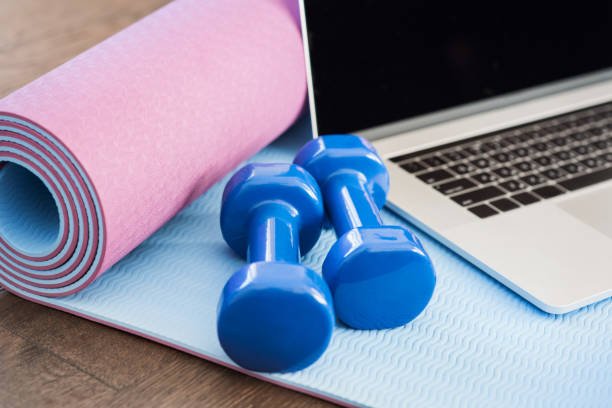Effective Exercises to Reduce Buttocks Size and Maintain Slimness
Introduction: Understanding Buttocks Size Reduction
In recent years, the desire for a slimmer appearance has gained prominence among individuals seeking to enhance their overall body image. Specifically, many people focus on reducing the size of their buttocks as part of their fitness journey. The pursuit of leaner body contours is not merely a trend; it serves both aesthetic preferences and health considerations. Maintaining a slim appearance can contribute to improved self-esteem, which in turn affects social interactions and personal confidence.
Physical exercise plays a pivotal role in achieving buttocks size reduction. Engaging in targeted workouts not only assists in reshaping and toning the muscles in this area but also promotes overall fat loss. A combination of strength training and cardiovascular exercises can effectively facilitate the reduction of buttocks size while improving muscle definition. Understanding the type of exercises that specifically engage the gluteal muscles can make a significant difference in achieving the desired results.
Moreover, incorporating regular physical activity into one’s lifestyle has ancillary health benefits. It can enhance cardiovascular health, support weight management, and reduce the risk of developing chronic conditions. By focusing on exercises designed to trim and tone the buttocks, individuals can foster not only physical transformation but also improved mental and emotional well-being. Achieving a slimmer buttocks size through exercise requires commitment, consistency, and a well-structured fitness regimen.
This blog will explore effective exercises aimed at reducing buttocks size. By understanding the demands of each workout and its effects on the body, readers will be better equipped to create a balanced and productive fitness routine that aligns with their individual goals and aspirations. In essence, the right approach to exercise can significantly contribute to achieving a slimmer appearance and maintaining long-term results.
The Science Behind Fat Loss in the Buttocks
Understanding the science behind fat loss is crucial for anyone looking to reduce the size of their buttocks. Fat loss occurs when the body is in a caloric deficit, meaning it expends more energy than it consumes. This process is primarily driven by the body’s metabolism, which regulates how energy is produced and utilized. The rate at which an individual’s metabolism operates can significantly influence overall fat loss, including in the buttocks area. Genetic predispositions also play a vital role in determining fat distribution, which explains why some people may store more fat in their hips and thighs than others.
Targeted exercises can indeed help shape the body, although it is important to note that spot reduction—losing fat in a specific area through targeted exercises—is largely considered a myth. Instead, engaging in exercises that strengthen and tone the gluteal muscles can contribute to the overall appearance of the buttocks. Activities such as squats, lunges, and deadlifts not only build muscle but can also enhance the metabolic rate, thereby supporting fat loss throughout the body, including the buttocks.
Moreover, factors such as age, hormonal balance, and lifestyle choices can all influence fat loss efficiency. Testosterone and estrogen, for instance, affect fat distribution patterns. Regular physical activity, combined with a balanced diet, is essential in promoting an effective fat loss environment. Hydration levels, quality sleep, and stress management further amplify these effects, allowing for better overall body composition changes.
In essence, while fat loss in the buttocks can be influenced by targeted exercises and metabolic health, a comprehensive approach that includes a combination of physical activity, proper nutrition, and lifestyle modifications is necessary for optimal results.
Top Exercises for Reducing Buttocks Size
Reducing buttocks size can be an essential goal for individuals seeking to enhance their overall physique. Incorporating a blend of strength training and cardio exercises is key in targeting the gluteal muscles while promoting fat loss. Below are some of the most effective exercises designed to achieve these aims.
1. Squats: A fundamental exercise, squats engage multiple muscle groups including the glutes, quadriceps, and hamstrings. To perform a squat, stand with your feet shoulder-width apart. Keeping your back straight, lower your body as if sitting in a chair, ensuring your knees do not go beyond your toes. Return to the starting position. Aim for three sets of 10-15 repetitions. This exercise not only helps in toning the buttocks but also enhances overall leg strength.
2. Lunges: Lunges are effective for targeting the glutes and thighs. Stand upright and step forward with one leg, lowering your hips until both knees are bent at roughly a 90-degree angle. Push back to the original position and alternate legs. Performing 2-3 sets of 10-12 lunges on each leg enhances muscle definition and promotes cardiovascular fitness.
3. Glute Bridges: This exercise emphasizes the glute muscles while also engaging the core. Lie on your back with your knees bent and feet flat on the ground, hip-width apart. Lift your hips towards the ceiling until your body forms a straight line from your shoulders to your knees. Hold the top position for a moment and then lower back down. Repeat for 10-15 repetitions over three sets. This movement is beneficial for strengthening the posterior chain.
4. High-Intensity Interval Training (HIIT): Incorporating HIIT into your routine can significantly aid in reducing buttocks size. Alternate between intense bursts of cardio exercises such as jumping jacks, burpees, and sprints, followed by short rest periods. This approach increases calorie burn and fat loss, effectively targeting the buttocks over time.
By consistently integrating these exercises into your fitness regimen, you can effectively work towards reducing the size of your buttocks while promoting overall fitness and well-being.
Incorporating Cardio for Optimal Results
Cardiovascular exercise plays an essential role in any fitness regimen aimed at reducing overall body fat, particularly around the buttocks. Unlike strength training, which helps to build muscle, cardio is critical for burning calories and improving cardiovascular health. When incorporated alongside strength training exercises, cardio can enhance fat loss and contribute significantly to a slimmer appearance.
To achieve optimal results in buttocks reduction, individuals should aim for a minimum of 150 minutes of moderate-intensity cardiovascular activity each week. This equates to approximately 30 minutes of cardio five days a week. Engaging in a variety of cardiovascular workouts not only keeps the routine fresh and enjoyable but also maximizes fat-burning potential. Effective options for cardio include running, cycling, swimming, brisk walking, and group fitness classes such as Zumba or kickboxing.
A high-intensity interval training (HIIT) routine can also be particularly beneficial. HIIT involves alternating between short bursts of vigorous activity and periods of lower intensity or rest. This method not only elevates the heart rate quickly but also keeps the metabolism revved up for hours after exercise, contributing to increased calorie burn. For individuals who are new to exercise, it is advisable to start with moderate cardio sessions, gradually increasing the intensity and duration as fitness levels improve.
Incorporating diverse forms of cardio, such as dancing or rowing, can engage various muscle groups, including the glutes, thereby aiding in a more toned appearance while simultaneously working towards overall fat loss. Remember that consistency is key; maintaining a regular schedule, in combination with strength training, will lead to the best results in reducing buttocks size and achieving lasting slimness.
Stretching and Flexibility Exercises to Maintain Slimness
Incorporating stretching and flexibility exercises into a fitness routine is essential for maintaining a slim physique, especially when it comes to targeting the buttocks. These exercises contribute significantly to improving overall muscle function, enhancing mobility, and supporting recovery from more intense workouts. Flexibility exercises specifically designed for the glutes and surrounding muscle groups promote a toned appearance while preventing injuries.
Flexibility training allows for a greater range of motion, which is particularly beneficial during strength training or resistance workouts. This improved mobility facilitates deeper squats and lunges, ensuring that the buttocks engage effectively. Exercises such as the hip flexor stretch, glute stretch, and seated forward bends not only target the glute muscles but also enhance overall physical performance. By maintaining flexibility, individuals are less likely to experience strains or muscle soreness, which can hinder their workout schedules.
Moreover, regular flexibility sessions help alleviate tension and stiffness that may build up from prolonged periods of sitting or engaging in strenuous activities. Incorporating mobility routines into daily habits can yield significant results for those looking to maintain slimness in their lower body. The inclusion of dynamic stretches, such as leg swings or walking lunges, serves to activate the muscles while also improving circulation, thereby contributing to a more toned look.
Ultimately, flexibility exercises are a crucial component for anyone seeking to maintain slimness and a defined shape in their buttocks. By prioritizing mobility, individuals not only enhance their physical appearance but also improve their overall performance and recovery in their fitness journey.
Posture and Its Effect on Buttocks Appearance
Posture plays a crucial role in determining the appearance of the buttocks. When a person maintains proper posture, it not only enhances their overall appearance but also contributes to the perception of slimness and body alignment. Good posture involves standing tall with shoulders back, spine straight, and pelvis aligned. This alignment can help in minimizing the prominence of the buttocks, thereby offering a sleeker silhouette.
During both exercise and everyday activities, being mindful of posture is essential. Engaging the core muscles is paramount as they support the spine and pelvis, providing stability and balance. Core strength acts as a foundation for good posture, which can result in a more aesthetically pleasing look for the buttocks. Exercises that target the core, such as planks, bridges, and leg raises, are beneficial not only for enhancing strength but also for promoting better alignment in daily movements.
Furthermore, individuals often find themselves adopting poorer postural habits throughout the day, especially while sitting for long periods. Slouching can lead to an exaggerated curve in the lower back, resulting in a projection of the buttocks that may not provide a flattering appearance. To combat this, individuals should consciously adjust their sitting positions and take frequent breaks to stand and stretch, ensuring they maintain an upright posture.
Incorporating posture checks during exercise routines can also lead to better outcomes. For instance, during squats or lunges, it is vital to keep the back straight and engage the core, which not only helps in achieving better results but also protects against injury. Overall, maintaining good posture can significantly enhance the visual appeal of the buttocks, presenting a more toned and slim physique.
Diet’s Role in Buttocks Slimming
A balanced diet is fundamental for individuals seeking to reduce buttocks size while maintaining an overall slim physique. The relationship between nutrition and fat loss is significant, requiring a comprehensive understanding of which dietary choices can effectively contribute to this goal. Incorporating whole foods, such as fruits, vegetables, lean proteins, and whole grains, can lead to optimal body composition. These foods are typically low in empty calories, making them advantageous for fat reduction.
Fruits and vegetables are particularly important due to their high fiber content, which can promote satiety, thereby reducing overall calorie intake. Additionally, they are rich in essential vitamins and minerals that support metabolic health. Lean proteins, including chicken, fish, legumes, and tofu, provide the necessary building blocks for muscle synthesis while also promoting a feeling of fullness. Meanwhile, whole grains, such as oats and brown rice, are complex carbohydrates that release energy gradually, aiding in sustained energy levels crucial for physical activity.
Hydration is another critical factor in the quest for slimmer buttocks. Adequate water intake supports metabolic processes and helps to maintain optimal hydration levels throughout workouts. Moreover, consuming water-rich foods such as cucumbers, watermelon, and oranges can contribute to hydration goals while adding essential nutrients to the diet.
To cultivate a healthy eating plan that aligns with exercise goals, meal planning and mindful eating practices are vital. Preparing nutritious meals in advance can prevent impulsive eating, leading to healthier choices. Additionally, being mindful of portion sizes and listening to hunger cues can help maintain a balanced approach to eating.
In conclusion, a well-structured diet contributes significantly to buttocks slimming efforts. By consciously selecting the right foods and staying hydrated, individuals can support their fitness regimens and enhance their overall body composition. Following these guidelines can bring about the desired changes while fostering long-term health.
Creating a Personalized Workout Plan
Creating a personalized workout plan is essential for effectively reducing buttocks size while maintaining overall slimness. To begin, it is important to establish clear goals tailored to individual needs and preferences. For instance, some individuals may aim for a toned appearance, while others seek a more significant reduction in size. Identifying these specific objectives will lay the groundwork for a successful workout regimen.
The next step involves selecting a combination of exercises that target the gluteal muscles and surrounding areas effectively. A balanced approach can include cardiovascular workouts, strength training, and flexibility exercises. Cardiovascular activities, such as running, cycling, or swimming, contribute to calorie burning, which is crucial for reducing overall body fat, including in the buttocks region. Incorporating strength training exercises, such as squats, lunges, and deadlifts, will help in toning and shaping the muscles, thus aiding in achieving a slimmer appearance.
When designing a workout plan, it is also important to set realistic targets. This could involve scheduling workouts consistently throughout the week, aiming for at least 150 minutes of moderate-intensity aerobic activity, along with two days of strength training to ensure comprehensive engagement of the gluteal muscles. Progression is vital; gradually increasing the intensity, duration, and frequency of workouts enhances muscle adaptation and keeps the body challenged.
Moreover, consistency cannot be overstated. Sticking to the outlined plan will yield the best results over time. Regularly revisiting and adjusting the plan based on performance and outcome is encouraged. Listening to the body’s feedback and incorporating recovery days is equally as important, allowing muscles to repair and grow stronger. Adopting this structured approach ensures an effective journey toward reducing buttocks size while promoting overall fitness and well-being.
Conclusion: A Holistic Approach to a Slimmer Silhouette
Achieving slimmer buttocks and overall body confidence requires a multifaceted strategy that goes beyond merely engaging in targeted exercises. Throughout this blog post, we have emphasized the importance of incorporating various elements into one’s fitness regime to promote a toned physique. To effectively reduce buttocks size, it is essential to blend specific workouts designed to strengthen and slim the gluteal muscles with a balanced diet and awareness of good posture.
In addition to exercise, nutrition plays a crucial role in shaping the body. A diet rich in whole foods, lean proteins, and plenty of fruits and vegetables not only supports weight loss but also enhances muscle recovery and overall well-being. Hydration should not be overlooked either, as it is vital for metabolic processes and maintaining energy levels during workouts. It is crucial to select nutrient-dense foods that assist in building lean muscle while minimizing fat accumulation in unwanted areas such as the buttocks.
Furthermore, maintaining good posture is a significant yet often neglected component of achieving a slimmer silhouette. Proper alignment aids in the effective functioning of muscles while preventing undue strain and injury. As we work on our physical fitness, being cognizant of our posture throughout everyday activities can yield significant results.
Ultimately, consistency is key. Embarking on this journey requires dedication and patience, and it is essential to remain motivated. Remember that incremental changes will lead to long-term benefits. Embrace the challenges along the way, as they contribute to personal growth. By adopting a holistic approach that combines targeted exercises, proper nutrition, and good posture, achieving and maintaining slimmer buttocks can become a reality. Your fitness journey is uniquely yours, and every step taken is an opportunity for transformation.



